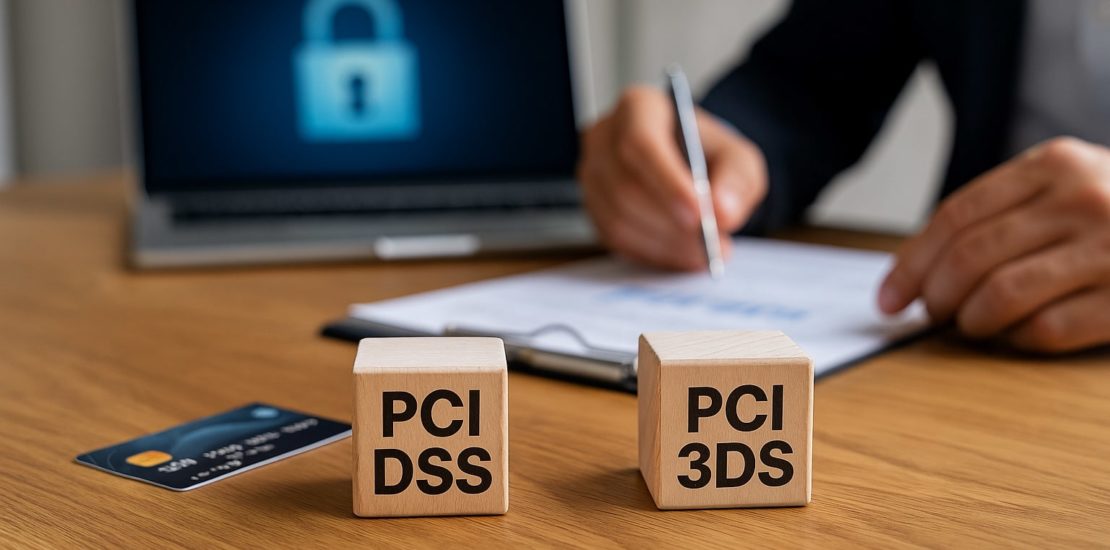PCI Compliance vs. PCI 3DS: Understanding the Overlap and Key Differences
- June 29, 2025
- Posted by: Gradeon
- Category: Compliance

In today’s increasingly digital commerce landscape, businesses handling cardholder data must stay compliant with evolving standards to ensure secure transactions and protect customer information. Two prominent terms in this space — PCI DSS (Payment Card Industry Data Security Standard) and PCI 3DS (3-D Secure) — are often used interchangeably, but they serve distinct purposes.
Understanding the overlap and differences between PCI Compliance and PCI 3DS is crucial for businesses aiming to improve payment security, meet regulatory obligations, and reduce fraud-related risks.
What is PCI Compliance?
PCI DSS is a global security standard developed by the PCI Security Standards Council (PCI SSC). It provides a framework of 12 key requirements designed to secure credit card data during storage, processing, and transmission.
The standard applies to all entities — including merchants, processors, and service providers — that store, process, or transmit cardholder data.
Objectives of PCI Compliance
The core goals of PCI DSS are to:
- Build and maintain a secure network
- Protect cardholder data
- Maintain a vulnerability management programme
- Implement strong access control measures
- Monitor and test networks
- Maintain an information security policy
Why PCI Compliance Matters
Achieving and maintaining PCI compliance helps organisations:
- Prevent costly data breaches
- Avoid non-compliance penalties
- Enhance customer trust
- Ensure secure card payment environments
Failure to comply can result in significant fines, legal liabilities, and reputational damage.
What is PCI 3DS?
3-D Secure is an additional layer of authentication for online card-not-present (CNP) transactions. It’s designed to reduce fraud and improve the security of online payments by requiring cardholders to verify their identity during the checkout process.
PCI 3DS is the security standard established by the PCI SSC to guide how 3DS data is processed, secured, and transmitted.
Key Components of PCI 3DS
The PCI 3DS Core Security Standard focuses on:
- Secure management of the 3DS environment
- Secure storage and transmission of 3DS data
- Risk-based authentication processes
- Protecting sensitive authentication data used in 3DS
It applies to 3DS vendors, Access Control Server (ACS) providers, and Directory Server (DS) operators, among others.
PCI DSS vs PCI 3DS: The Key Differences
While both standards originate from the PCI SSC and aim to protect payment information, their scopes, requirements, and use cases differ significantly.
1. Scope and Coverage
- PCI DSS: Applies broadly to all entities that handle cardholder data, including merchants, service providers, and payment processors.
- PCI 3DS: Applies specifically to entities involved in the 3-D Secure transaction ecosystem.
2. Purpose
- PCI DSS: Focuses on end-to-end security of the cardholder data environment (CDE).
- PCI 3DS: Focuses on securing the 3DS infrastructure, which supports customer authentication during e-commerce transactions.
3. Data Types Protected
- PCI DSS: Protects all cardholder data and sensitive authentication data (e.g., CVV, PAN).
- PCI 3DS: Protects 3DS-specific data elements like authentication requests, responses, and metadata shared during a 3DS transaction.
4. Validation Process
- PCI DSS: Annual validation through Self-Assessment Questionnaires (SAQs), Qualified Security Assessors (QSAs), or internal assessments.
- PCI 3DS: Entities must undergo assessments using the PCI 3DS Core Security Standard by a 3DS Assessor.
Where PCI DSS and PCI 3DS Overlap
Despite their differences, the two standards do intersect in several ways:
1. Data Security Principles
Both standards emphasise securing sensitive data through encryption, access control, and monitoring.
2. Risk Mitigation
PCI DSS helps protect cardholder data from breaches, while PCI 3DS aims to prevent unauthorised access during online transactions. Together, they contribute to a layered security model.
3. Compliance from the Same Authority
Both frameworks are governed by the PCI Security Standards Council, ensuring consistency in security expectations across different parts of the payment ecosystem.
Which Standard Does Your Business Need?
This depends on your business model and role in the payment ecosystem.
Merchants and Service Providers
- If you store, process, or transmit cardholder data, you need to comply with PCI DSS.
- If you are involved in facilitating 3DS transactions (e.g., as a 3DS server or Access Control Server provider), then PCI 3DS compliance may also be required.
Payment Gateways and Fintechs
These businesses often sit at the intersection, needing to comply with both PCI DSS and PCI 3DS to ensure secure transaction handling and user authentication.
Practical Considerations for Compliance
1. Assess Your Data Flows
Determine what kind of cardholder or authentication data you collect and handle. Mapping data flows helps determine which standards apply.
2. Work with Certified Assessors
Engage with Qualified Security Assessors (QSAs) for PCI DSS or PCI 3DS Assessors to guide your compliance journey.
3. Regular Monitoring and Testing
Both standards require continuous security monitoring, vulnerability scanning, and penetration testing to maintain compliance.
4. Implement Risk-Based Authentication
If you handle 3DS, adopting risk-based authentication techniques not only improves user experience but also enhances fraud detection.
Conclusion
PCI Compliance and PCI 3DS serve different but complementary roles in securing payment systems. While PCI DSS ensures comprehensive protection of cardholder data across all environments, PCI 3DS targets the authentication layer of e-commerce payments to prevent fraud at the point of transaction.
For businesses operating in the digital payments space, understanding and implementing the right compliance measures is critical to ensuring secure transactions, meeting industry standards, and protecting your brand reputation.
Need Help with PCI Compliance or PCI 3DS?
At Gradeon, we offer tailored consultancy services to help businesses navigate the complexities of PCI DSS and PCI 3DS compliance. From gap assessments to remediation and audit support, we ensure your organisation stays ahead of security risks.
